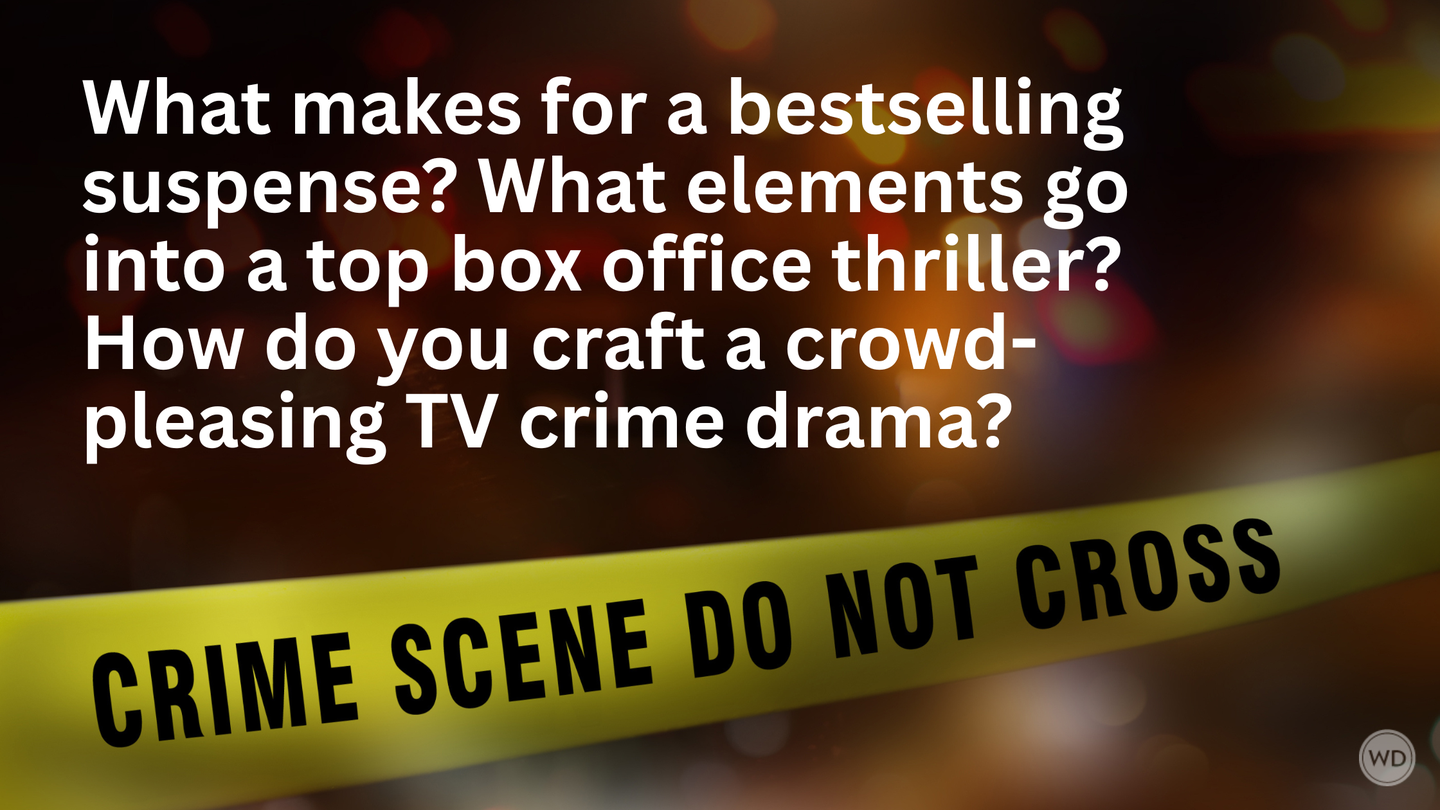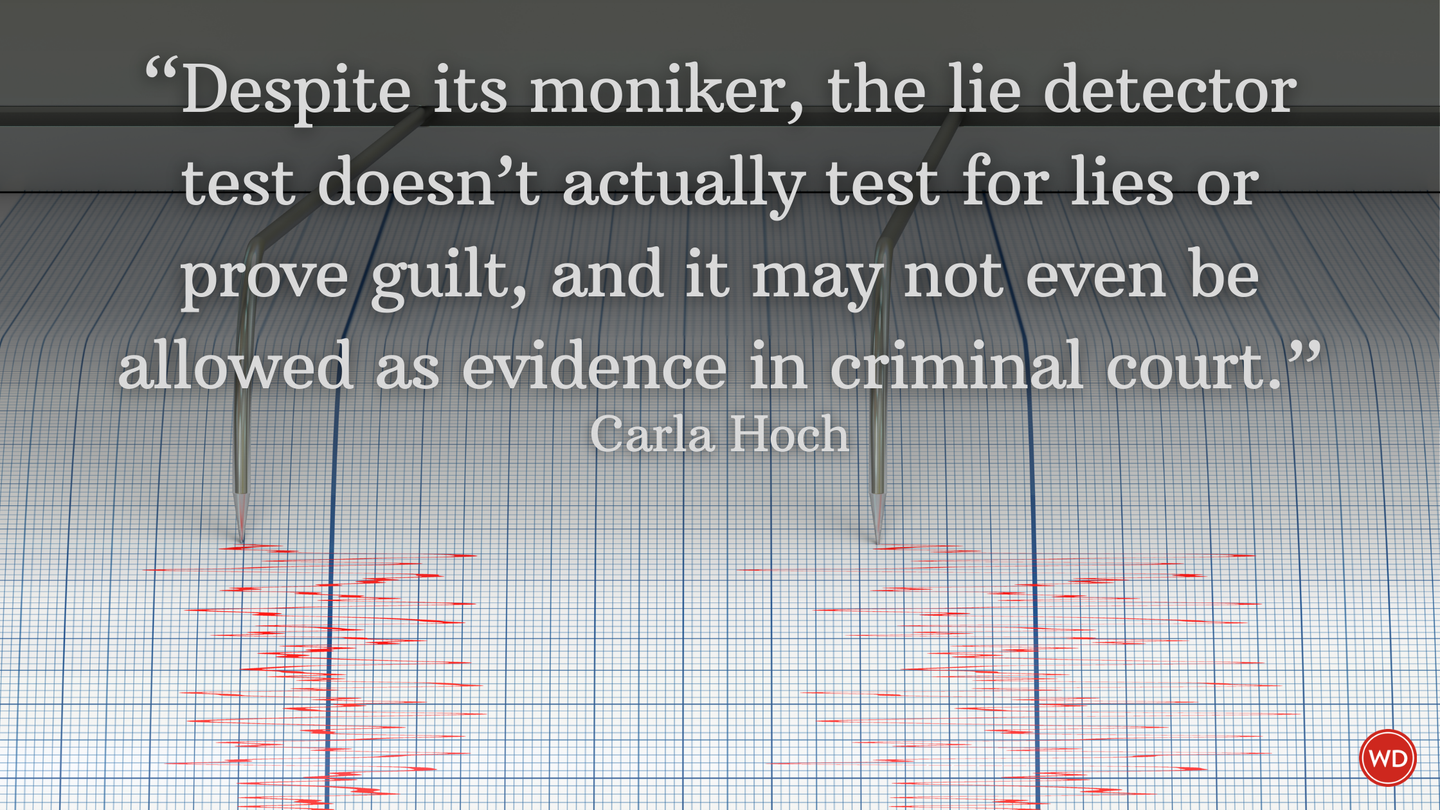Focusing On Point of View in Your Fight Scenes: FightWrite™
Trained fighter and author Carla Hoch explains why focusing on point of view in your fight scenes is better for your sensory details than having firsthand knowledge of complicated fight sequences.
Last month with FightWrite™ on the WD Blog, we looked at the importance of adding sensory details to your fight scene and how they connect the reader to the work. This month, we will delve deeper into the type of sensory details to add and the impact POV has on which ones you should include. And we will do so with a little help from a killer clown. Hey, it’s October. I had to.
Sensory details are far more important to your fight scene than any of the fight technique. Readers may not be able to follow a complicated fight sequence or understand technical lingo. But they will understand the physical sensations if a writer chooses the right words. Remember, as Maya Angelou said, people will forget what you say, but they won’t forget how you made them feel. That is very true of readers. Tell them about the fight, and they will forget. Make them feel the fight, and they will remember.
You Don’t Have to Know It to Show It
Unfortunately, I think sometimes when writers write fight scenes, they get preoccupied by their lack of fight knowledge. They think it’s not possible to write how a punch feels if they’ve never been punched. I get that thinking. But let me assure you, it’s not necessary to have experienced something firsthand to write it well. I mean, do you think Stephen King dressed like a clown, hung out in the sewers, and killed folks before writing the book It? Probably not. I’m, like, 99 percent sure he didn’t.
Use What Your Reader Knows
So, how does King manage to scare our eyebrows off with something of which he has no personal experience–be it a killer clown, car, dog, writer, or fan of a writer? How does he cock-doody-do it! (Little Misery reference there.) He does it by keeping the human experience front and center no matter how strange the terror he is typing. When King ventures into territory with which he has no firsthand knowledge and to which readers can’t relate, he uses sensory details that are accessible. If, for example, his characters are being chased by a werewolf, he will dig deeper into what the humans are experiencing rather than what the werewolf is doing.
Here’s what I mean. Here’s an excerpt from It, where kids are, in fact, being terrorized by a werewolf. As if the Pennywise clown wasn’t enough!
Bill was lying spreadeagled on the coal. His hands waved and clutched fruitlessly for the window frame, which was just out of reach. His shirt and jacket were rucked up almost to his breastbone. And he was sliding backward ... no, he was being pulled backward by something Richie could barely see. It was a moving, bulking shadow behind Bill. A shadow that snarled and gibbered and sounded almost human.
IndieBound | Bookshop | Amazon
[WD uses affiliate links.]
There is nothing in that scene that required King to actually be attacked by a werewolf in order to convey realism. He used imagery that we can grasp: hands that can’t find a hold, clothes riding up, the sensation of being dragged. All of these are not uncommon to the human experience and all of them convey a sense of powerlessness. And, did you notice how the werewolf sounded? Almost human. Again, he is connecting with the human experience. On that note, do you know how Pennywise the clown connected with the children he sought to kill? Sensory words. “Can you smell the circus, Georgie? There’s peanuts… cotton candy… hot dogs… and…”
Creepy as it is, that’s exactly how you should connect with your reader in your fight scenes. Choose sensory details that are accessible to people who have no knowledge of fighting. Don’t worry about describing the technical moves of a blade. Most readers will not be able to understand that. Instead, focus on its weight in the hand, the metallic clang of metal against metal, the oof sound of breath being forced out of the body as a blade sinks in. How do I know that’s the sound someone makes when they are stabbed in the gut? I don’t! But I know when someone is hit in the midsection, that’s the sound they make. And just about everyone has had the wind knocked out of them and can relate to that oof.
POV Matters
Now, where things can get tricky is when the fight scene is written in first person and the narrator is part of the fight. It is written third person omniscient, so King had plenty of latitude in conveying the horror and violence. If anything from the scene could be seen from any point of view, King could write it. That’s not the case when the POV is first person.
When the narrator of the scene is in a fight, they are by default in fight or flight mode. They are soaked in adrenaline. Everybody has heard of adrenaline and almost everyone has been under its effects. But, unless you’ve been forced to pay attention to those effects, you might not know what they are. And when writing a fight scene, regardless of the POV, you absolutely must keep adrenaline in mind.
Effects of Adrenaline
The job of adrenaline is to keep us alive. One of the ways it does that is by focusing one’s attention on the threat with a sort of tunnel vision. Anything around your character that might distract from the threat will dim. They won’t really notice sounds, smells, and sights unless those things are greatly exaggerated. They may not immediately recognize even well-known people or their voices. Critical thinking skills will diminish. Fine motor skills will weaken. Physical sensations such as pain will be limited. That is not to say a character will feel no pain during a fight. It is to say that any pain they feel will pale in comparison to the pain that emerges after adrenaline takes its leave.
No Fear Here
Adrenaline also dulls emotions. As tasty as fear is to King’s Pennywise the clown, for the one soaked in adrenaline, it doesn’t taste like much. While your character is in full-on fight or flight mode, they won’t feel fear. I know how crazy that sounds. It’s very counterintuitive to think that while you are fighting you aren’t afraid. But, as threat assessment specialist and author of the book The Gift of Fear, Gavin deBecker says, if you’re afraid, it hasn’t happened yet.
The only thing you feel when you are fighting, whether for a medal or your life, is the will to continue and the drive to survive. So, when your character sees Pennywise the clown peering from the gutter, yes, they will feel a hearty bit of terror. But, once Pennywise bites their arm off, they won’t be afraid. Instead, they will be in the void: a place where nothing exists but instinct and the present moment.
First Person Predicament
If the POV of that scene is that of your de-limbed character, they may not comprehend that their arm has been chomped off. They may not understand that they could bleed to death even while their blood spurts in rhythm with their heart’s beating. Honestly, that mauled character may disassociate altogether and view the scene from above as a passive viewer. By the way, another function of adrenaline is time distortion. So, as your character floats above the scene of horror and watches their own self, it may seem like five minutes or an hour, which can be very handy for a writer.
So, for all you non-fighter writers who want to write a fight scene but worry you can’t do it with authenticity, think of Stephen King. No matter what fresh hell he is writing, he focusing more on the characters than the hell itself. In your fight scenes, pick out details that anyone can relate to, like textures, colors, sounds, and smells. And always keep adrenaline in mind. If the POV of the scene is first person, you might need to turn down the volume on some details and cull the emotion of fear all together. Instead, put your character in the void and have them simply react.
Until the next round with FightWrite™ on the WD blog, get blood on your pages. And, in the words of It's Pennywise the clown, “Beep, beep.”
Carla Hoch is the award-winning blogger of FightWrite® and author of the Writer’s Digest book Fight Write: How to Write Believable Fight Scenes. She is a WDU instructor who regularly teaches on the craft of writing fight scenes, action, and violence as well as the mechanics of fighting for writers. Carla is a world champion jiujitsu player and has experience in almost a dozen fighting styles. She lives and trains outside Houston, Texas.







